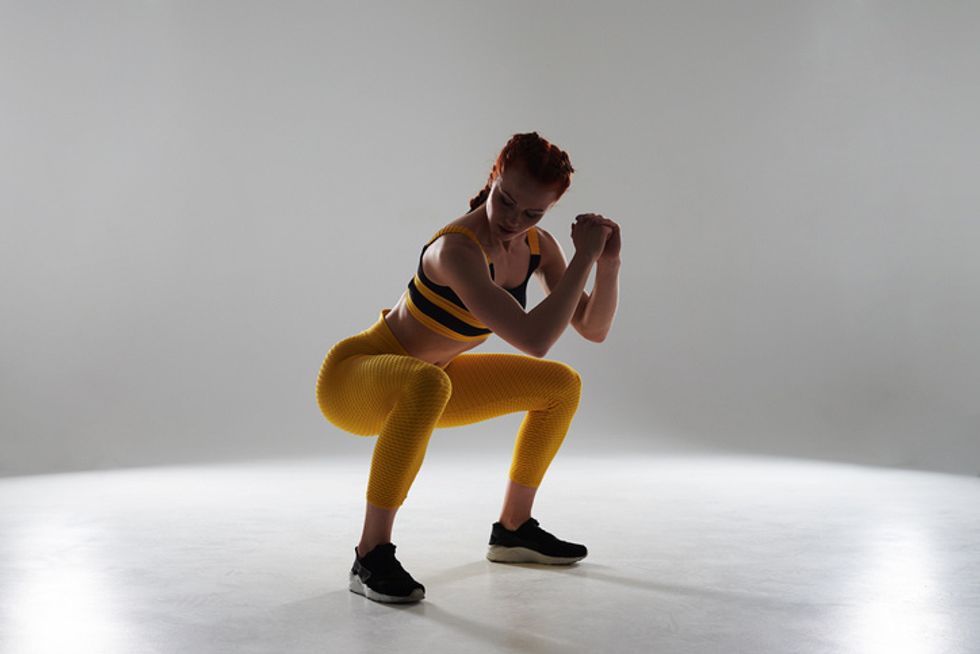Here’s How to Stay Injury-Free During Crazy Convention Weekends
By the Sunday evening of a long convention weekend, you can expect to be thoroughly exhausted and a little sore. But you shouldn’t leave the hotel ballroom actually hurt. Although conventions can be filled with magical opportunities, the potential for injury is higher than usual.
Keep your body safe: Watch out for these four common hazards.
The Challenge: Less Than Ideal Floors
Most often, you’ll be dancing on carpet or on a slick faux-wood floor laid out in the center of the room—neither of which are the ideal sprung surfaces you’re used to.
“Try to think about landing a little lighter, using your muscles to control it,” says Alicia Ferriere, a physical therapist at Finish Line Physical Therapy in New York City. “If you know you’ll be doing a lot of jumps, warming up with some light jumping will help your muscles activate properly.”
If you feel you need to use more force to turn on carpet, test it before launching into your pirouette or piqué full-out. You won’t rotate as seamlessly as you’re used to, and if your supporting leg can’t handle any additional force going into the turn—or it sticks to the ground too much—you can put a lot of torsion into your ankle or knee, explains Ferriere. That can lead to ankle or knee sprains, tendinitis or meniscal tears.

The Challenge: Icy AC
States and seasons don’t matter: Convention rooms are often cold. “Make sure you have layers of clothes to take on and off,” says Megan Richardson, athletic trainer and acupuncturist for the Harkness Center for Dance Injuries at NYU Langone Health. “You always want to be a little bit sweaty. That means your muscles are probably warm enough.”
Resist the temptation to skip a solo warm-up in favor of a few quick splits. There’s not always a designated warm-up at the start of each class, or even each day. “Never assume you’ll get a warm-up,” says Richardson. “Take the stairs up to the convention room instead of the escalator. Do a few jumping jacks, squats, lunges—anything to get your heart rate up. Pliés, running in place for a minute or two, walking, ankle circles, leg swings. Dynamic movement is key.”
The Challenge: A Packed Schedule
“Injuries happen more when we’re tired,” says Ferriere. As you become physically and mentally exhausted, your form can falter.
The key, Richardson says, is to make sure you’re getting sleep. “That’s when the body repairs and resets,” she says. “Don’t come into the weekend tired. Come in rested, and get sleep throughout the weekend.”
Keep plenty of snacks, water and electrolyte drinks in your bag, and don’t wait until you’re hungry or thirsty to have them. If you get headaches, feel nauseated, become really irritable, or have dark yellow or brown urine, “you’ve gone too far,” Richardson says. “Eat, drink and sleep to avoid running on fumes.”
The Challenge: Peer Pressure
With sometimes hundreds of dancers under the direction of one teacher and a few assistants or demonstrators, there’s not a lot of oversight or individual attention.
“You need to be smart when you’re out there in a sea of bodies,” says Richardson. “The teacher can’t do one-on-one adjusting. You need to be mindful of when you should be pushing and how you’re feeling.”
Check in with yourself and make sure that you don’t feel twinges, pain or anything beyond your limits. “It’s hard, because you’re probably pumped with adrenaline,” says Richardson. “Plus, you want to keep up with your neighbor. But know that this is one moment in time. If you push too hard, you’ll be done for the rest of the day or weekend. If you don’t do a side aerial at home, don’t do it in the ballroom.”




